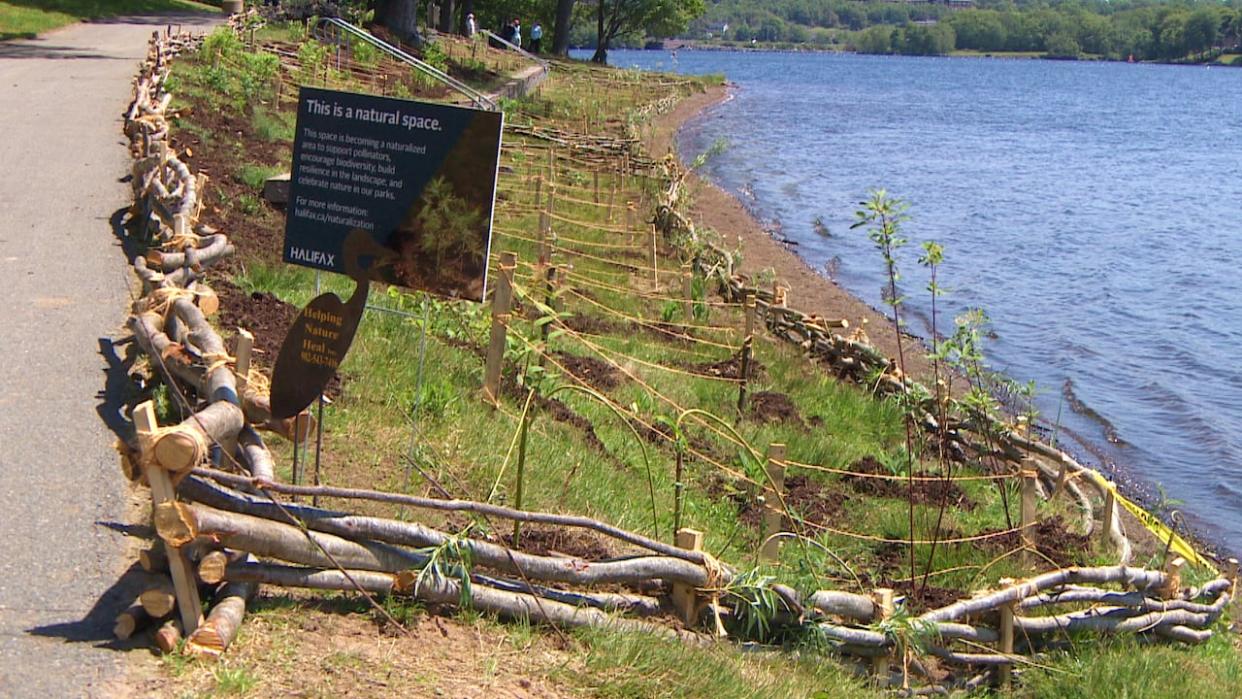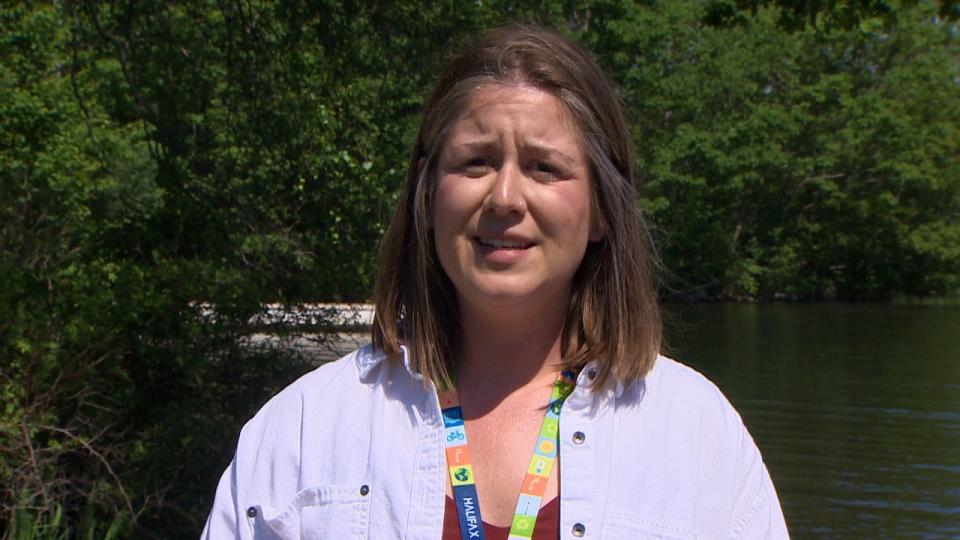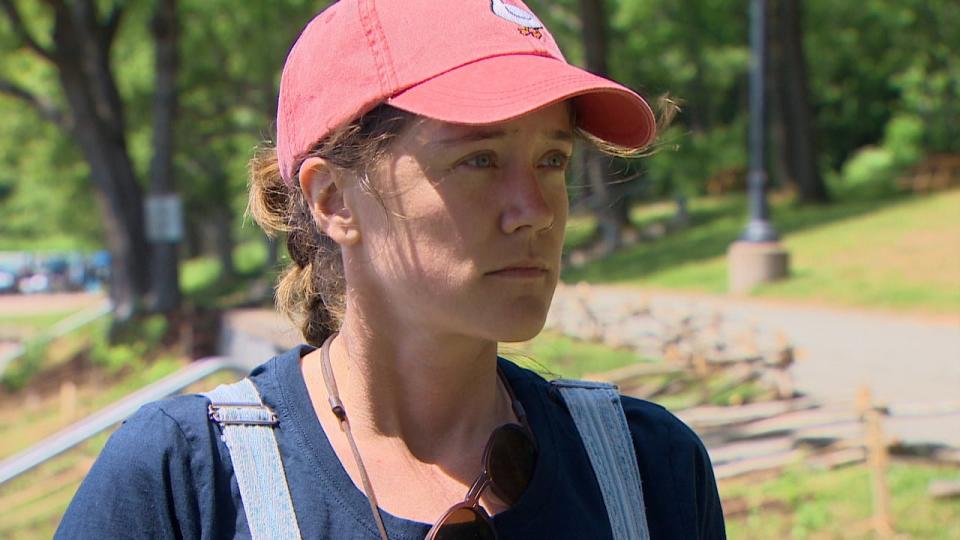Living shoreline project takes shape at Lake Banook

A living shoreline is being installed at part of Lake Banook in Dartmouth, N.S., partly with the aim of helping filter contaminants that would otherwise end up in the water.
The work being done at Birch Cove Park includes installing a fence made from trees to help protect the perimeter of the living shoreline. Native species such as red osier dogwood and willow will be planted to encourage biodiversity.
Elizabeth Montgomery, the water resources specialist with the Halifax Regional Municipality's environment and climate change team, said this is the first naturalization project for the municipality.
"In general, sources of pollution in lakes come from land, so the more that we can do to capture that overland flow from getting into the water, the less likely there is that there's going to be contamination," she said.
Montgomery said a living shoreline provides many benefits to the ecosystem, such as increased habitat for pollinators and more shade for fish. It can also help with goose poop.

Elizabeth Montgomery, a water resources specialist with HRM, says the living shoreline will act as a filter, helping maintain water quality. (Pat Callaghan/CBC)
Montgomery said the dung washes into the water when it rains. That can cause high E. coli levels that lead to beach closures.
"You're holding the land a little more, but you're also reducing the areas right beside the beach where geese like to hang out," said Montgomery. "And so if they're not there, they're not going to the bathroom and causing these kind of E. coli problems."

Shauna Doll, an environmental specialist with the municipality, said 32 sites have been identified for potential naturalization projects. (Pat Callaghan/CBC)
Shauna Doll, an environmental specialist with the municipality, is helping do the installation.
She said some of the goals of the project are to slow storm water flow and reduce erosion.
But there are also esthetic benefits, such as people enjoying the native plants and the species they attract, such as bees and butterflies.
"If we take care of nature, nature is going to take care of us," said Doll, noting the municipality has identified 32 sites for potential naturalization projects.
MORE TOP STORIES


